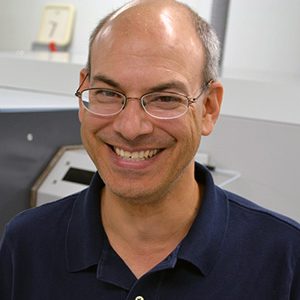
A Florida State University geochemist was part of an international team that published startling evidence that a type of meteorite — fragments of ancient asteroids that land on Earth — shows signs it contained liquid water no more than a million years ago.
Scientists have long hypothesized meteorites delivered water from asteroids to Earth in the solar system’s infancy. But it was unclear if asteroids, bodies that orbit the sun, still held water in the form of ice or if that was lost in space. The team’s findings, published in the journal Science, suggest the asteroids these meteorites came from are not solid rock, but rather frozen balls of mud that still contain ice.
Munir Humayun, a professor in FSU’s Department of Earth, Ocean and Atmospheric Science and researcher at the FSU-headquartered National High Magnetic Field Laboratory, helped envision the study’s concept and developed several of the study’s data models.
“Meteorite researchers were aware of the role of water/ice on certain asteroids in the early solar system four-and-a-half billion years ago,” Humayun said. “Our data indicate that ice persisted to nearly the present and was melted and lost from the meteorites only after they were dislodged by impacts between asteroid fragments and larger (parent) asteroids that act as hammers to knock off fresh material and began their journey to Earth. This would imply that such asteroids still preserve ice.”
Simon Turner, an isotope geochemist professor at Macquarie University in Australia, led the study with colleagues from France and the United States. He said the findings are significant in both scientific and, prospectively, practical terms.
“Not only does [the study] provide strong evidence to support the hypothesis that Earth’s water originated in asteroids, it also holds potential for mining asteroids for water in the future,” he said. “This would be a huge advantage for space exploration, or, in a worst-case scenario, a means of supplementing Earth’s supplies of fresh water.”
The team used samples of a particular kind of meteorite — carbonaceous chondrites — which represent about four to five percent of all known meteorites. These are relatively porous, meaning they can hold substances within them. Minerals that have been found in these meteorites are types that only appear in the presence of water and other organic compounds.
The researchers used samples from meteorites that had been observed falling, which gave them a date of arrival. And since the samples had been collected within days of arrival on Earth, it also enabled researchers to rule out environmental contamination by the water in the atmosphere.
They then calculated the water flow timeline using uranium-thorium dating, a technique that uses isotopes of those elements to establish when liquid was moving in the rock.
When liquid flows, it moves isotopes of uranium with it, separating parent from daughter isotopes, leaving a short-term — in the geological sense — record of the flow. That record only lasts about a million years. Because uranium is very soluble in fluid, and thorium (one of its isotopes formed from the decay of uranium) is not, fluid flow within the rock would separate the two.
Crucially, thorium (230) has a half-life of 75,400 years. After somewhere between several hundred thousand and a million years, it will have decayed beyond the ability to measure it effectively. Thus, older fluid flow events would not be noticed by the method.
Every one of the carbonaceous chondrites the team tested had isotope ratios indicating that liquid water had flowed through them in that period.
“No one had thought of analyzing U-series isotopes in meteorites before, because it was assumed that they had not undergone chemical disturbance for billions of years,” Turner said. “So, we might have been seen as crazy, but the results proved otherwise.”
Researchers from Macquarie University in Sydney, Florida State University, Muséum National d’Histoire Naturelle in Paris and Observatoire de Paris participated in this study.
Macquarie University contributed to this article. Learn more about the study from its publication The Lighthouse.




